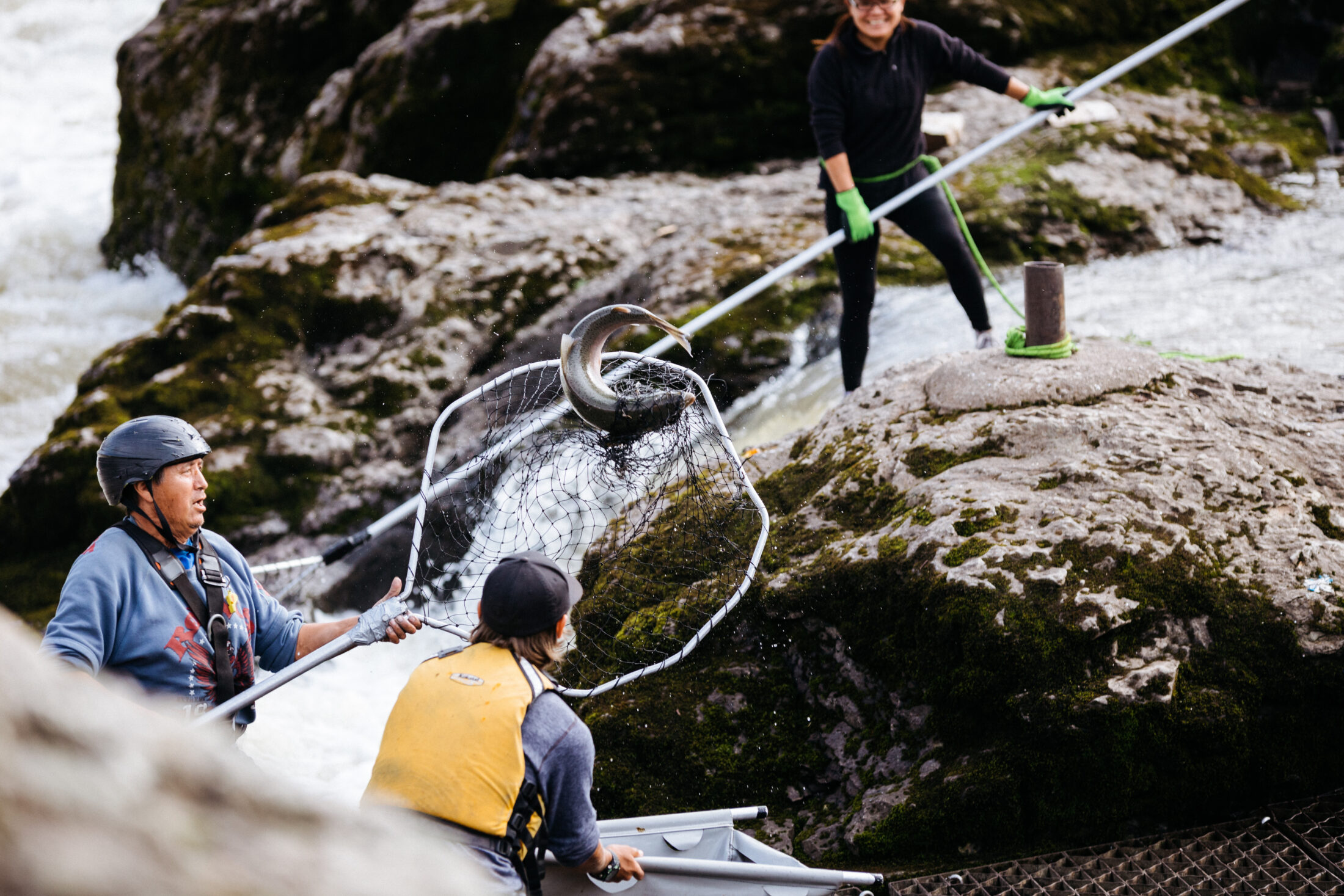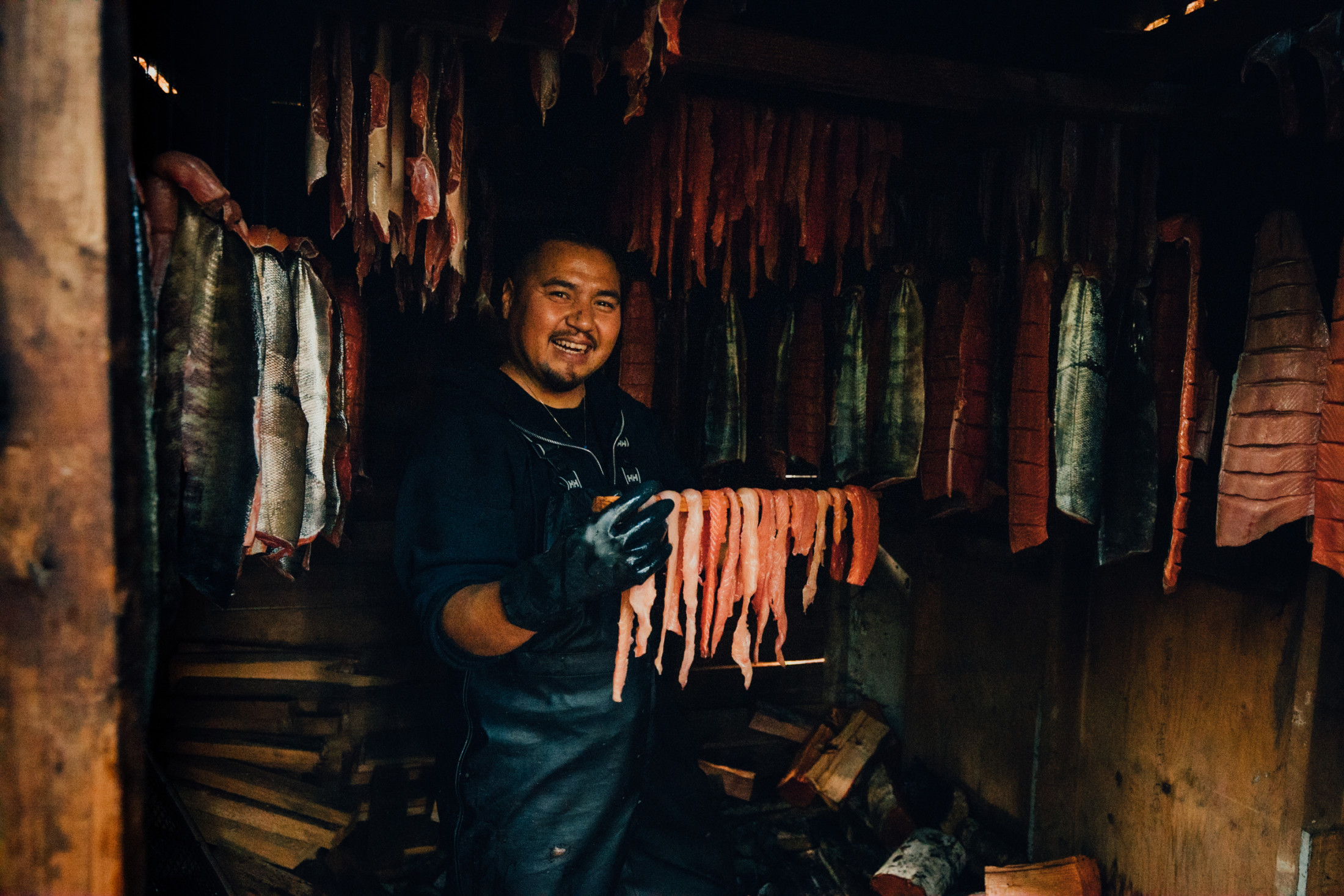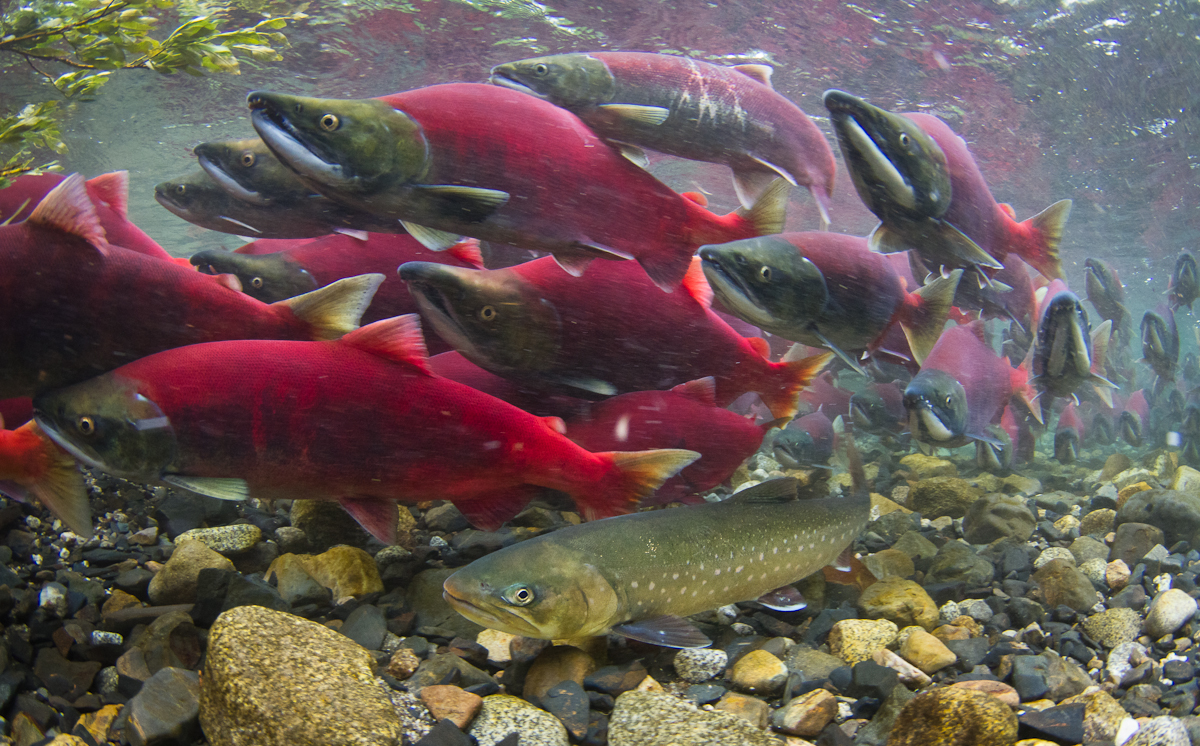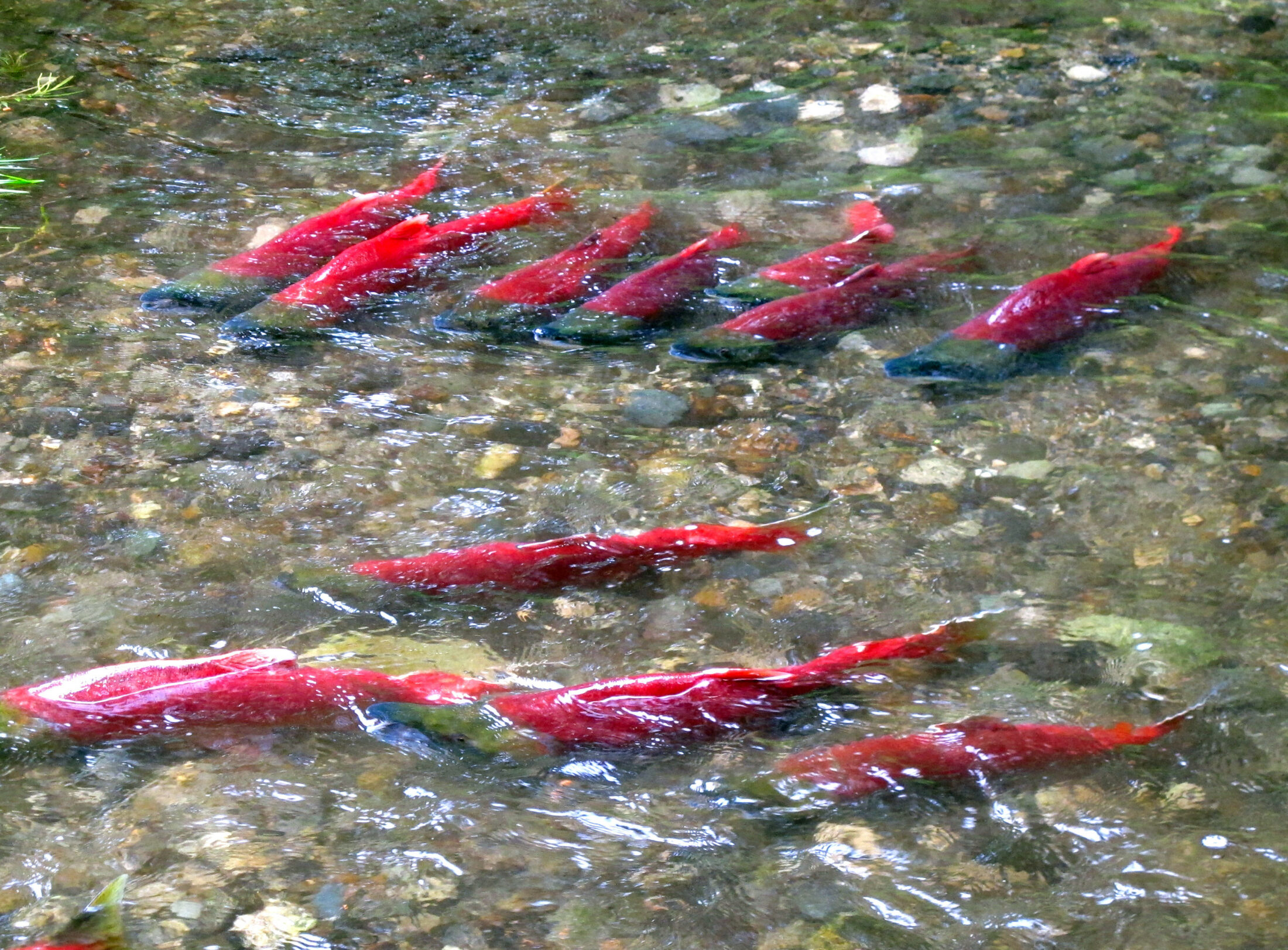
The Right Honourable Mary Simon aims to be an Arctic fox
Canada’s first-ever Indigenous governor general doesn’t play favourites among our majestic natural wonders, but she...
After nearly two decades of closing the Skeena watershed sockeye food fishery or limiting the catch, the Wet’suwet’en First Nation is finally seeing promising returns.
“Almost everybody that wanted sockeye this year got some at least,” Walter Joseph, fisheries manager with the Office of the Wet’suwet’en, said in an interview. “I wouldn’t say it met people’s needs, but we did distribute more fish than we have in many years.”
The sockeye runs in the Morice-Nanika system upriver from Witset, a Wet’suwet’en community north of Smithers, B.C., dropped to 8,000 fish in the mid-1990s, Joseph said. In the first half of the 20th century, 10 times that many fish — an average of around 80,000 — would reach the watershed, according to Michael Price, a fisheries biologist working with the Office of the Wet’suwet’en. Between 2010 and 2017, the average return was 16,000, Price said.
The final counts are not in, but Joseph estimates around 25,000 fish reached the Morice-Nanika system this year — that’s a more than 50 per cent increase since 2017.
Ideally, Wet’suwet’en food fishers would take 8,000 fish, but most years they’ve been catching fewer than 1,000. This year, they caught almost 2,000.
The higher returns this year are the result of sacrifices made by the Wet’suwet’en and other nations as well as collaborative conservation efforts by First Nations, conservation groups and Fisheries and Oceans Canada.
By closing the fishery or limiting the catch, the Wet’suwet’en sacrificed their social, cultural and food needs to give the fish time to recover from the combined pressures of overfishing, loss of habitat, competition from other species of salmon introduced by hatcheries and climate change.
Joseph said closing the food fishery was surreal.
“Some years you’d go down to the canyon and gee, there’s nobody fishing,” he said. “Holy smokes, is that ever disturbing.”

A Wet’suwet’en food fisher snags a sockeye salmon from the canyon in Witset. About 2,000 fish were caught this fall, double the number in recent years. Photo: Marty Clemens
When Joseph became fisheries manager in the 1990s, the sockeye runs in Wet’suwet’en territory were dangerously low due to the coastal commercial fishing industry.
Joseph recalled the runs building up nicely in Witset until the commercial fishery opened. “It’d be like a door closed, the runs would drop right off,” he said. “The big commercial fisheries really fished hard in those days.”
At the time, the commercial fishing industry was given priority over the Indigenous food fishery, according to Greg Knox, executive director of SkeenaWild Conservation Trust.
“Historically, the commercial fisheries were catching probably about 70 to 80 per cent of the sockeye that were coming into the Skeena River,” he said in an interview. “That sort of pressure is not sustainable.”
Permanently losing the ability to harvest sockeye would be devastating for communities that have relied on the fish as a food source for thousands of years and whose cultures and history are deeply intertwined with the species.
To address the crisis, the Wet’suwet’en first closed the food fishery in 2001, and every year since, they have carefully evaluated the numbers of salmon returning and either limited the catch or closed the fishery.
Joseph said when the decline reached a critical point, neighbouring nations worked together to address the situation. “When it appeared that the runs were going to be really bad, the nations would meet quite regularly and try to decide how they were going to proceed.”
All of the Indigenous communities within the watershed have a deep connection to the fish.
“The importance of salmon to First Nations on the Skeena and in other places cannot be overstated,” Charlie Muldon, fisheries coordinator with the Gitxsan Watershed Authority, said in an interview. “All the villages are located at prime fishing sites, whether they’re on the Skeena or on tributaries.”
Muldon said some of those villages are abandoned now, as subpopulations of sockeye and other salmon species have been extirpated.

Salmon is nutritionally and culturally important to First Nations in B.C. Here, Troy Jack works in a salmon smokehouse in Bella Bella. Photo: Louis Whitehouse / The Narwhal
“In most cases, First Nations proved that they were willing to sacrifice a year’s catch in order to have fish for the future,” Muldon said. “It’s hard to explain how difficult that decision is.”
Joseph said the Wet’suwet’en approach to salmon conservation is guided by the nation’s matrilineal system of governance.
“The Matriarchs ultimately make some pretty big decisions when it comes to caring for their families,” he said. “The more they’re involved, the more likely you’ll get buy-in from the rest. They help you police it too. If somebody is fishing when they shouldn’t be, we talk to the Matriarchs and they go and sort out the fisherman.”
In addition to closing or limiting their food fishery, First Nations worked with conservation groups in the Skeena watershed to pressure the federal government to make changes to the commercial fishery. After years of consultation, Fisheries and Oceans Canada announced its wild salmon policy in 2005.
The policy prioritizes the conservation of Pacific salmon and their habitat, noting the need for biological diversity, which is preserved by the species having access to multiple spawning locations. As habitat is impacted by development and resource extraction, that biodiversity is lost.
But an unexpected high Skeena sockeye return in 2006 led to a controversial decision by Fisheries and Oceans Canada to open a large-scale commercial fishery, negatively impacting the sockeye returns upriver.

First Nations and conservation groups pressured the federal government to protect sockeye salmon in the Skeena watershed. Photo: J Armstrong / University of Washington
In the wake of that decision, an independent science review panel was formed to help figure out how to properly implement the wild salmon policy. The panel presented 23 recommendations to the government in 2008, including that decisions around commercial, Indigenous and recreational fisheries consider subpopulations within the watershed, not just the species as a whole. The recommendations led to a more rigorous conservation strategy for protecting salmon.
“[That] definitely helped the weaker populations of salmon, which were historically overfished for a long time,” Knox said.
Since 2009, significant reductions to the allowable catches of the commercial sockeye fisheries have decreased the pressure on subpopulations in the watershed. In 1990, more than two million sockeye were harvested in the north coast region alone. This year, the commercial sockeye fishery was only allocated about 50,000 fish.
Small successes like this year’s higher sockeye returns give a glimmer of hope that the species has a chance of survival, but salmon are still severely threatened.
“Many populations have been struggling, even though we have reduced pressures on them,” Knox said.
As subpopulations of sockeye continue to decline or disappear, the pressure on the remaining runs is greater. “Historically, it wasn’t that way,” Muldon said “If one sockeye population was suffering, the people would go somewhere else.”

Sockeye salmon face myriad threats, including loss of habitat and food. Photo: Katrina Liebich / USFWS
Knox explained that climate change is dramatically impacting both the marine environment and the freshwater systems salmon rely on. In the ocean, salmon survive on a diet of zooplankton, tiny organisms that are extremely sensitive to temperature changes. As the oceans warm, the abundance of zooplankton decreases. More frequent droughts and major flood events destroy spawning habitat.
Muldon said the weather conditions have led to unpredictable returns. And while this year’s salmon runs are a little stronger than previous seasons, there still wasn’t enough fish to go around.
“None of the First Nations in the Skeena this year met their food fish allocations for sockeye, chinook or anything else,” Muldon said, adding that hope for the future hinges on First Nations continuing to work together.
“First Nations watershed-wide need to come together. We admit that there’s going to be differences, but we need to sit down and work our way through those differences in order to move forward in a cohesive manner to change management. Because it’s come down to the point now that we need to protect the environment for the future.”
“This past year has started giving me some hope that it is possible to do something positive for the stocks.”
Knox agreed. “First Nations are key because they care deeply about these populations and they rely on them for food. So they always play a central role in protecting and rebuilding salmon populations. And we’re seeing that here in the Skeena.”
Partnerships between the federal and provincial governments, First Nations and conservation groups are also key to protecting and rebuilding salmon populations, he added.
Joseph said after so many years of struggle and sacrifice, it’s good to see salmon returning to the community.
“This past year has started giving me some hope that it is possible to do something positive for the stocks.”
Get the inside scoop on The Narwhal’s environment and climate reporting by signing up for our free newsletter. A $335 million funding commitment to fund...
Continue reading
Canada’s first-ever Indigenous governor general doesn’t play favourites among our majestic natural wonders, but she...

In Alberta, a massive open-pit coal mine near Jasper National Park is hoping to expand...

A trade war could help remake B.C.’s food system, but will family farmers be left...
